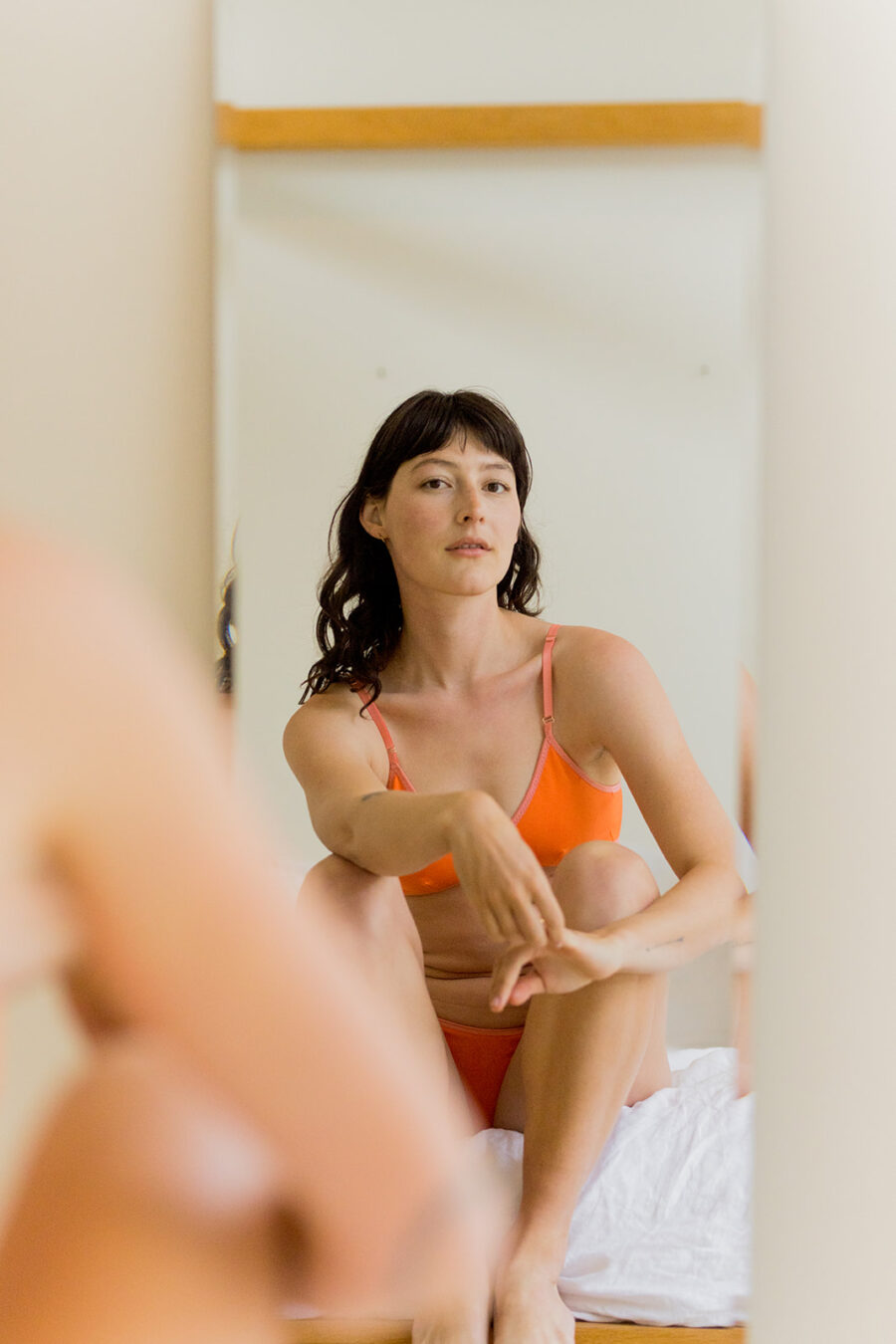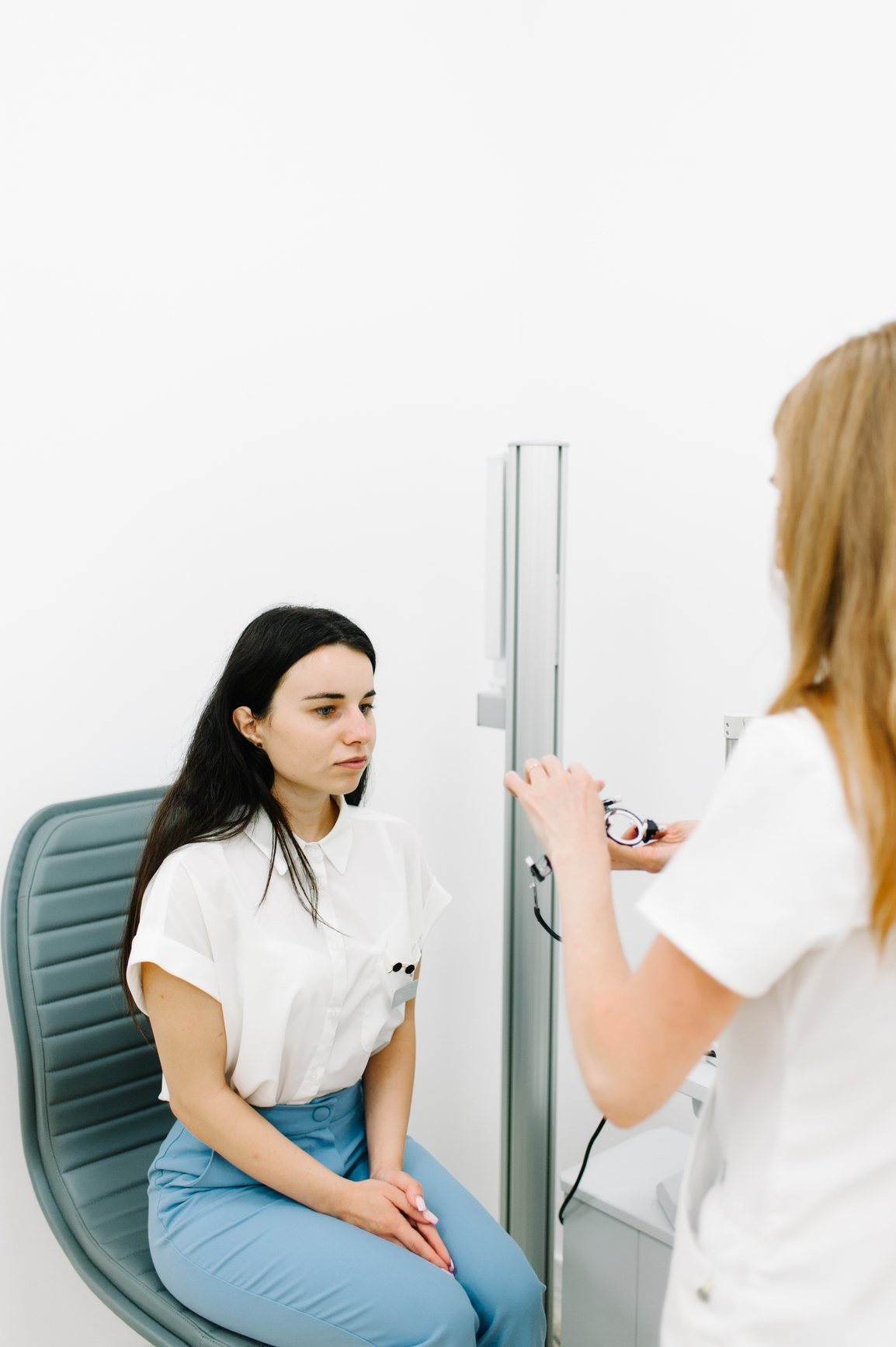
How A Traumatic Injury Brought Me Back To My Body
When my neck was snapped, everything changed for me. I mean this all very literally. In the spring of 2024, I wandered into a well-reviewed chiropractor for a tune-up. On the table, she held my fragile head in her hands, snapping my neck to the side, and I was never the same.
“When my neck was snapped, everything changed for me.”
After a few days of what I assumed and was assured was residual soreness, I woke up one morning in the worst pain of my life, completely unable to move my head from side to side. I cried as I tried to get dressed, gingerly buttoning one of my boyfriend’s flannel shirts, as I couldn’t lift my arms above my head. A tingle burned down the backs of my arms and into my hands, whiting out sensation from my ring and pinky fingers. On this Shabbos morning, when I was supposed to have my phone on silent and tucked away, I was plugged in and dialing, Ubering to cupping and acupuncture, calling doctors, calling the chiropractor to beg for an explanation.
For weeks, I lived in doctor’s offices, under the hum of MRI machines. I experienced temporary relief on the acupuncture table, softening the knotted mess of muscles roping over themselves like a pit of snakes beneath my skin. I wiped my yoga teaching schedule, unable to move for weeks. I struggled to open doors, to carry a purse, to get out of bed, to nod in affirmation when spoken to. I felt like my life was on an indefinite pause, which it was.
“I struggled to open doors, to carry a purse, to get out of bed, to nod in affirmation when spoken to. I felt like my life was on an indefinite pause.”
As far back as I can remember, my life has revolved around the joy of moving my body. My mom is a personal trainer, and my sister is a gymnast-cheerleader turned zipline guide, so we like to say it runs in the family. For me, it’s always been about dance and yoga. I had my first ballet class before I started pre-school, and I spent my childhood and teenage years dedicated to ballet and modern dance. I dreamed of going professional, I auditioned for intensives and trainee programs, and relished the field trips my studio took to master classes at Steps, Broadway Dance Center, and Alvin Ailey. I loved the beauty, the movement, the music. When I discovered yoga, it was like falling in love with a new kind of dance. I loved moving my body into beautiful shapes, utilizing my flexibility, and having active goals as opposed to results-based goals for my personal fitness. No, I did not want to tone my inner thighs or burn that stubborn fat — I wanted to stand on my head and do splits! Before I was out of college, I was a certified yoga teacher, and it was everything I hoped it would be. I loved sharing yoga with others, and I found that teaching deepened and enhanced my practice. So when it was all yanked away from me so suddenly, it felt like my world was falling apart.
“I found that teaching deepened and enhanced my practice. So when it was all yanked away from me so suddenly, it felt like my world was falling apart.”
My MRI showed three bulged discs in my cervical spine. And while there were things I could do to manage the pain, there was no direct treatment that could heal me. I was met with a laundry list of things I should probably never hope to do again — headstand, forearm stand, fish pose, bungee jump, cliff dive, skydive, squat a barbell, pick up my toddler and swing them above my head one day — as well as an even longer list of things I had to be very, very careful about — twists, handstands, lifting heavy things above my head, ziplining, anything that involves jumping, going to sleep at night without meticulously positioning my every limb. These things obviously vary in their level of importance to me.
I felt downright geriatric, and I was in pain every waking moment of my life. I could schlepp to my acupuncturist in FiDi, but the journey home was often enough to flare me up all over again. I began to feel like my life was over.
Things did begin to change as my muscles eased. Regular acupuncture opened up my mobility in my neck, and I was elated just to be able to turn my head from side to side again. As my condition began to improve, my feelings got more complicated. I’d swing between anger, sadness, mourning, and immense gratitude for my body for supporting me through the darkness, for being strong enough to make tiny improvements.
Thank you, body, for carrying me here to this acupuncturist’s office, and relaxing beneath these needles enough to turn my head from side to side again. I feel so much better than I did a month ago. But God, I’ll never feel as well as I did before all this happened.
“As my condition began to improve, my feelings got more complicated.”
It took weeks of acupuncture, massage, cupping, and physical therapy before I could teach again. And although I was happy I could teach, I wasn’t ready to get back to my own practice. I was still in pain every day, and one wrong move could send me into a spiral.
The few times I tried to practice, I’d feel my neck flare up, the tingling and numbness in my arms and fingers would arise, and I’d find myself crying in pain that night as I tried to fall asleep.
I’d never been so sedentary. Movement, for me, had always just been there. And what’s more, it has always been fun and joyful. It wasn’t something I had to drag myself into. And while I do resonate with the idea that pain is the body’s signal to force you into much-needed rest, I must admit that very little about this time felt restful for me. It felt taxing. And a part of what felt so taxing was losing the freedom of movement I once enjoyed.
“After many months of this, I began to accept that there would be no ‘getting back to normal.'”
After many months of this, I began to accept that there would be no “getting back to normal.” There were no physical therapy exercises, no acupuncture tricks, no amount of massage, that would heal my injury. I could manage it, I could treat it, but curing it was out of the picture. And while this may sound like resigning myself to suffering, I look back on it as the best thing I could have done for myself. Because when I sat with myself and understood that this was my new baseline — that the body I have now is the body I must work to support, that the old body that served me for many years just isn’t here anymore — I could finally begin to move forward.
My years of ballet and yoga left me with big expectations for myself. Like I mentioned, having performance-based goals has always been extremely important to me, as opposed to results-based goals. And I’ve always found that both aesthetic results and practical comfort just naturally tended to follow when I pursued my performance goals. When I focused more on my inversions, splits, twists, arm balances, etc., the rest just materialized without me having to think too much about it. And although “make my neck not flare up” isn’t exactly the same as “flatten my stomach,” they are both results-based goals, which is a large shift from how I’ve historically thought about my movement practice. Things shifted when I stopped thinking about my body as something that was getting in the way of my movement practice, and started thinking about my movement practice as something that could support me and help me achieve practical comfort.
“Things shifted when I stopped thinking about my body as something that was getting in the way of my movement practice.”
So, I let it all go. I put a temporary ban on lusting after wheel pose and bird of paradise, and practiced yoga like a beginner. I thought about how I’d plan a class for a student who came to me with the same injury. Would I try to make them do wheel pose? No! I’d work on gently introducing them back into the practice and slowly building up core strength to take pressure off the neck. I also focused on other forms of light exercise like walking, which doesn’t put pressure on the neck and has many health benefits. I started doing mat Pilates to build more core strength, and I found that Pilates was especially helpful, as the deep core stabilizing and the absence of extreme backbends and twists fit exactly with my needs. I began to see some of the most dramatic improvements in my neck through this strategy of using movement to support my body’s needs.
“I know that my injury can never take away the most important thing about my yoga practice: my ability to move and breathe in connection with my body. “
Now, I am back to teaching, doing yoga, and doing Pilates. And I am often still in pain. That laundry list of things I can’t do will probably always be there, but I know that my injury can never take away the most important thing about my yoga practice: my ability to move and breathe in connection with my body. That is what yoga — and movement in general — is about. This experience, while heartbreaking and challenging, gave me a new opportunity to connect with my body. To actually listen to my body, the way I often advise my students to do, but sometimes have neglected to do myself.
Now, I can use my pain as an opportunity to slow down, ease up, move differently, book myself a nice massage, and tell my body, “Thank you for all that you do to support me, move me, and keep me safe.”
Jamie Kahn is a writer and yoga teacher based in New York. Her work has been featured in Glamour, Brooklyn Magazine, Epiphany, The Evergreen Review, and others.




